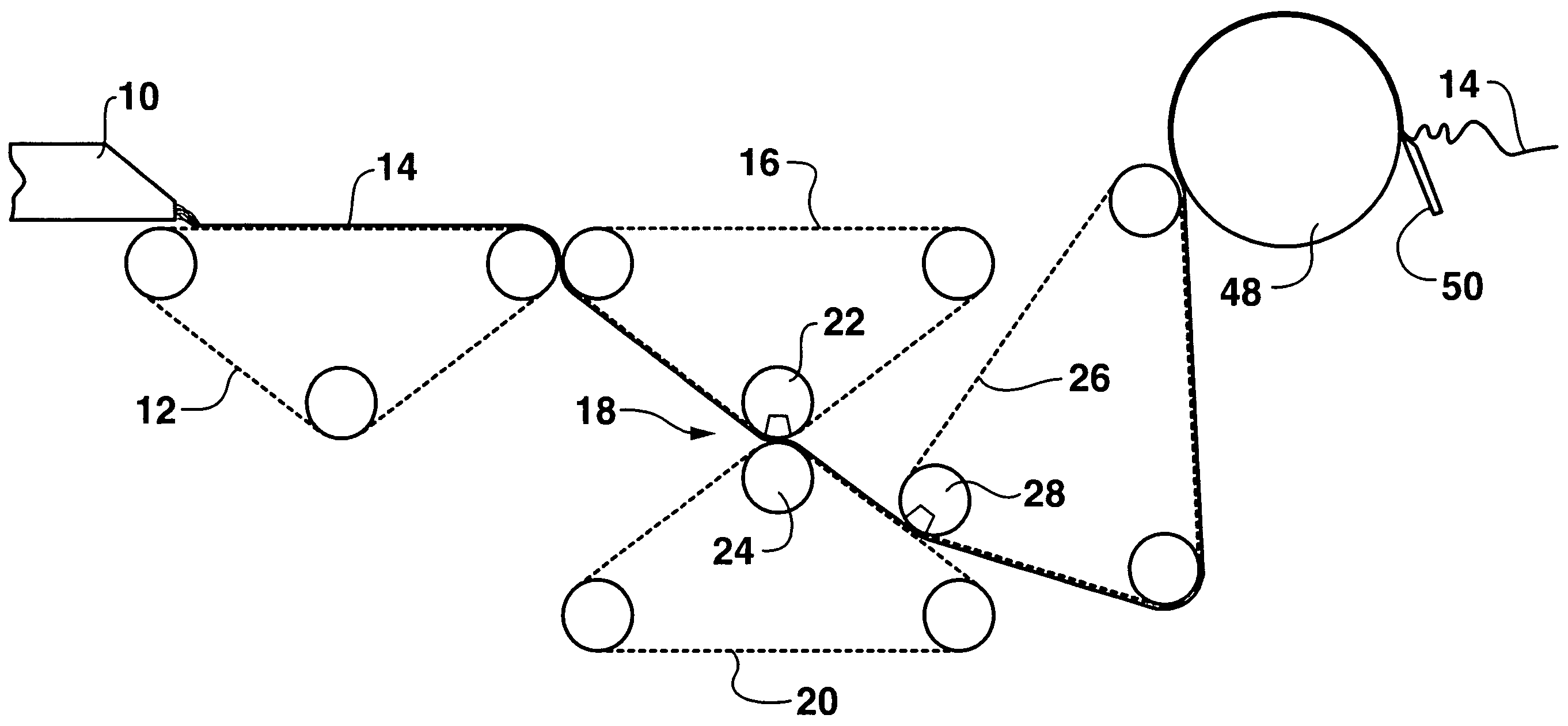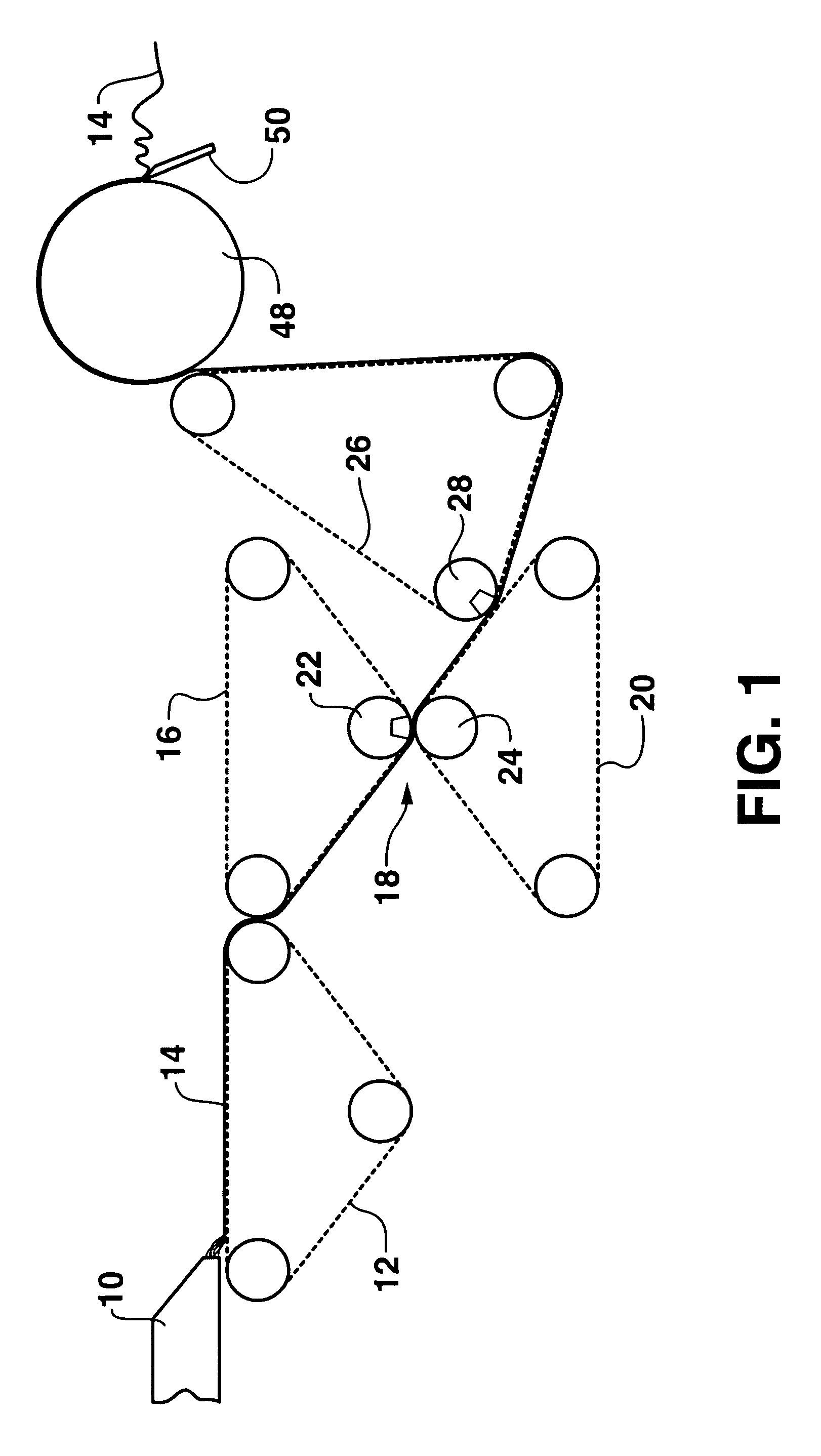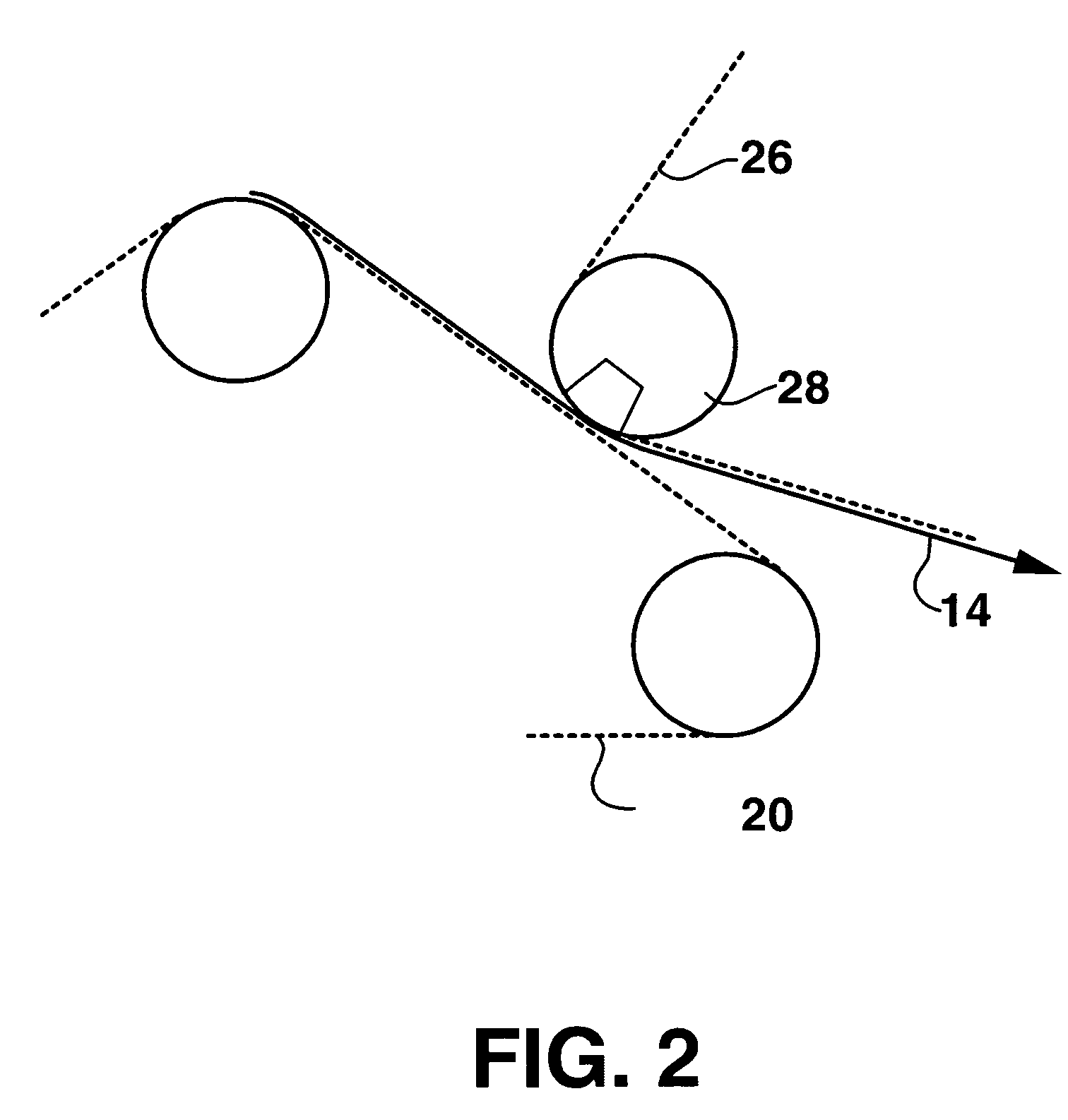Method for producing wet-pressed, molded tissue products
a tissue product and wet pressing technology, applied in papermaking, press section, non-fibrous pulp addition, etc., can solve the problems of increasing the cost of the construction and operation of the through-drying tissue machine, and increasing the energy requirements of the process. , to achieve the effect of low density and good bulk
- Summary
- Abstract
- Description
- Claims
- Application Information
AI Technical Summary
Benefits of technology
Problems solved by technology
Method used
Image
Examples
example 1
[0053]The following felt products were tested and compared for minimum pore size, maximum pore size, mean free pore size (MFP), and porosity: Albany Advantech™, Weavex Millennium™, Weavex Hyperpunch™, and AstenJohnson Helix™. Of the above listed felts, the Albany Advantech™ felt possesses the characteristics and properties needed for use in accordance with the present invention. In the past, it is believed that this felt product was used in processes for making highly compressed paper, such as stationery. The purpose of this example is to compare the properties of the Albany Advantech™ felt with the properties of other conventional felts that have been used in tissue making processes in the past.
[0054]The following is a description of the test methods.
[0055]The test sample is thoroughly wetted with a low-surface tension liquid. The sample is then placed into a porometer, where air pressure is applied to one side of the sample. The air pressure is slowly ramped up. At first, no flow ...
example 2
[0098]The same felt products tested above were then tested and compared for their fluid intake rate. In this example, the characteristics of the Albany felt were again compared to the characteristics of the remaining felts.
[0099]The following is a description of the fluid intake rate test. As used herein, the fluid intake rate test is measured after the samples have been wetted.
[0100]The Kruss Drop Shape Analyzer (DSA) employs a high speed digital video camera and an automated fluid delivery system to dispense and measure the properties of a fluid drop on a given substrate surface. From the video capture system, the intake rate and contact angle of the drop can be measured.
[0101]Intake rate can be used in determining the relative ease of fluid absorption into a given structure. The intake rate is dependent upon the porosity, pore size distribution, and surface energy of the wetted material. For this test, the samples were pre-wetted to remove the effects of surface energy. Thus, con...
PUM
| Property | Measurement | Unit |
|---|---|---|
| pore size | aaaaa | aaaaa |
| pore size | aaaaa | aaaaa |
| pore size | aaaaa | aaaaa |
Abstract
Description
Claims
Application Information
 Login to View More
Login to View More - R&D
- Intellectual Property
- Life Sciences
- Materials
- Tech Scout
- Unparalleled Data Quality
- Higher Quality Content
- 60% Fewer Hallucinations
Browse by: Latest US Patents, China's latest patents, Technical Efficacy Thesaurus, Application Domain, Technology Topic, Popular Technical Reports.
© 2025 PatSnap. All rights reserved.Legal|Privacy policy|Modern Slavery Act Transparency Statement|Sitemap|About US| Contact US: help@patsnap.com



